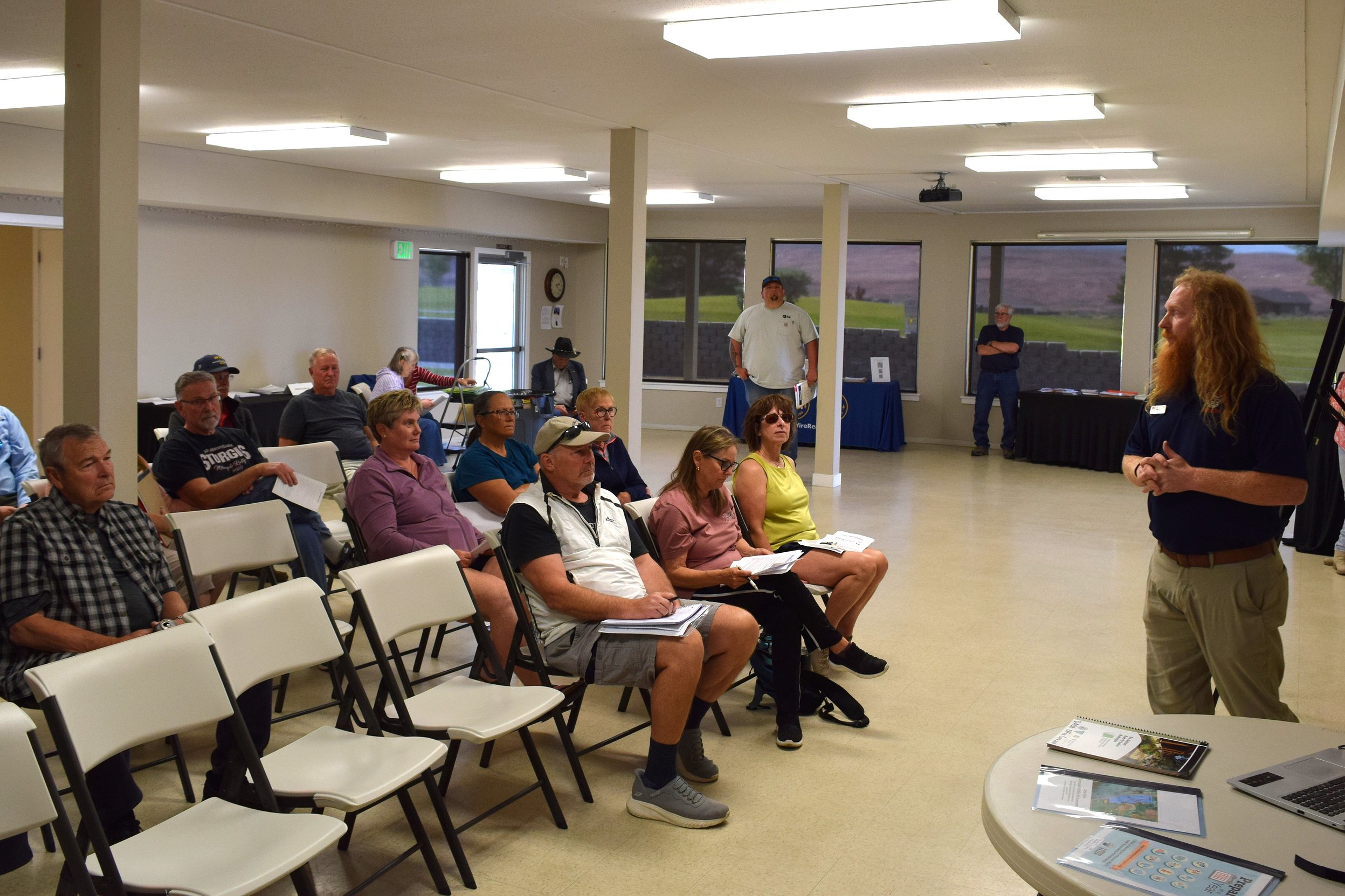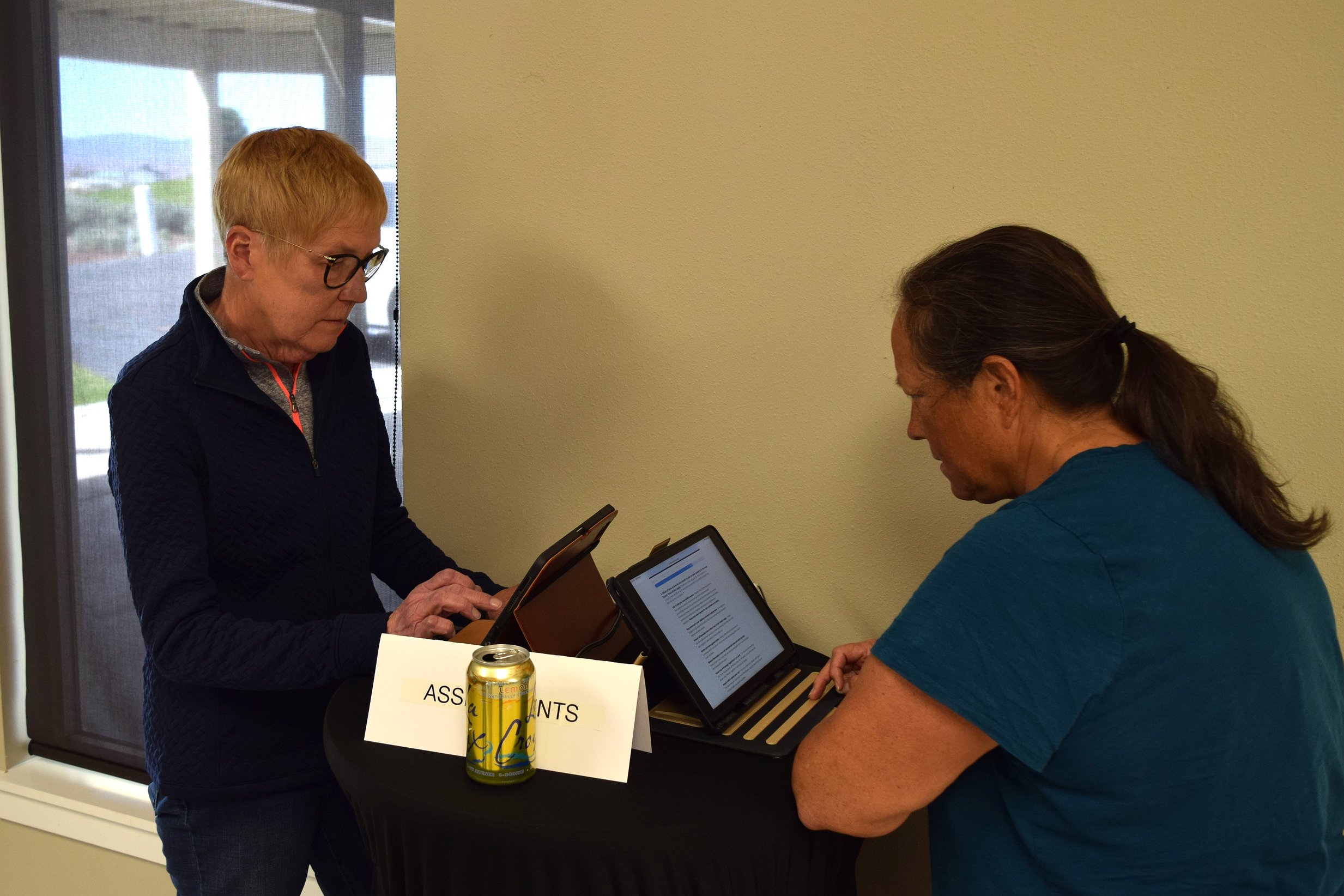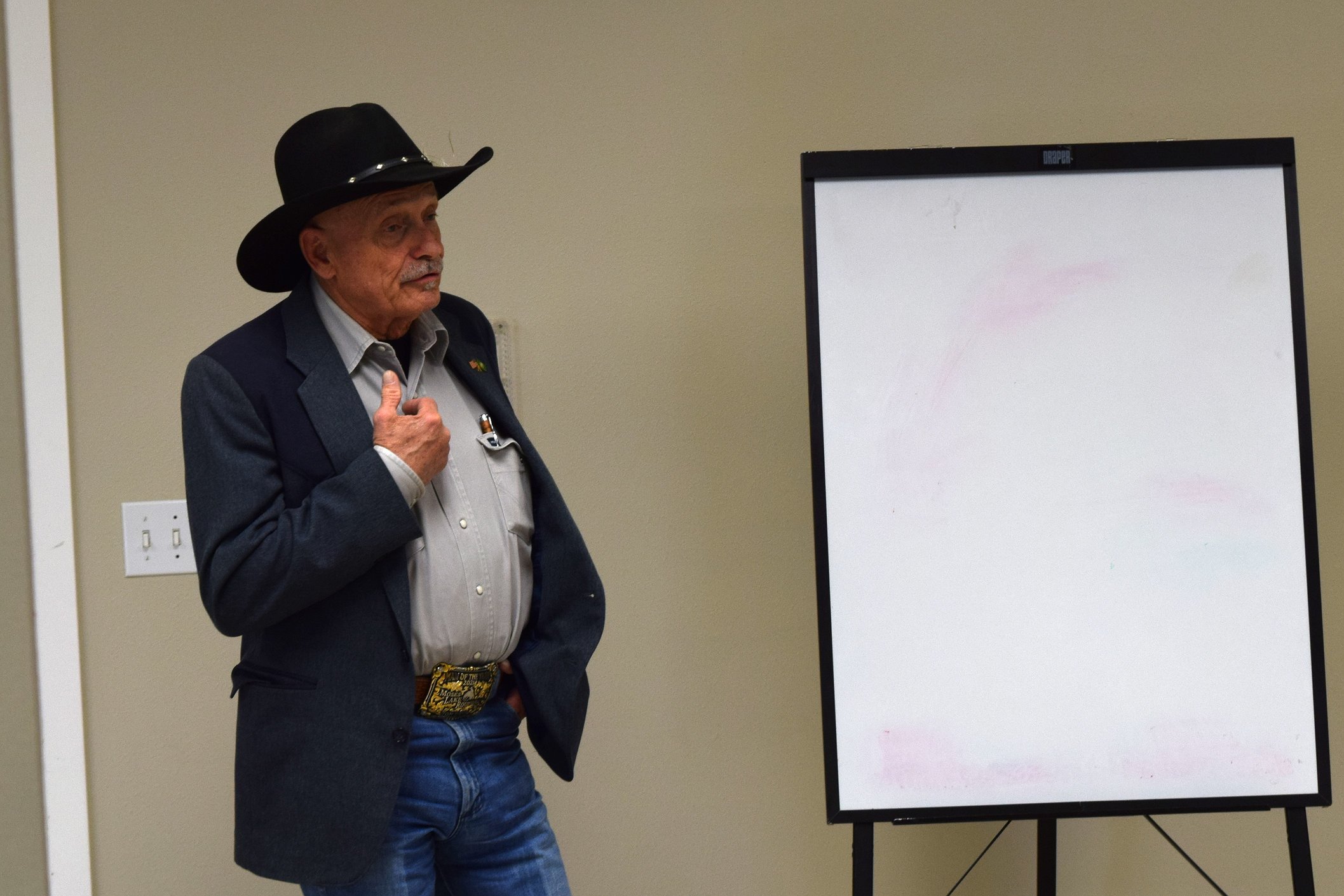Desert Aire hosts fire preparedness informational event
GABRIEL DAVIS | Hagadone News Network | UPDATED 1 year, 7 months AGO
Gabriel Davis is a resident of Othello who enjoys the connections with his sources. Davis is a graduate of Northwest Nazarene University where he studied English and creative writing. During his free time, he enjoys reading, TV, movies and games – anything with a good story, though he has a preference for science fiction and crime. He covers the communities on the south end of Grant County and in Adams County. | May 14, 2024 2:01 AM
DESERT AIRE — Representatives from the Desert Aire Owners Association, the Washington Department of Natural Resources, Grant County PUD, as well as Rep. Tom Dent, R-Moses Lake, and community members from Desert Aire met Wednesday for a fire readiness informational event at the DAOA building.
Jake Hardt, a community resilience coordinator with the DNR for Chelan, Douglas, Adams and Grant Counties, led the informational portion of the event, which focused on two programs the DAOA and Grant County Fire District 8 are looking to implement in Desert Aire.
“The Wildfire Ready Neighbors program is active in at least 12 counties across the state, and I'm moving it into areas where communities express interest,” Hardt said. “So the Sunland Estates and Desert Aire communities have expressed interest in the Firewise USA program, which is an overall community preparedness program, and part of the Firewise USA program is the community has to develop an action plan. Usually within those action plans is some sort of home assessment program, and Wildfire Ready Neighbors pairs well with Firewise USA.”
The Wildfire Ready Neighbors home consultation is completely free, Hardt said, and Desert Aire residents can sign up online.
“I built relationships with the local fire districts and got them some (National Fire Protection Association) Assessing Structure Ignition Potential training so that they can come out and engage in your communities and do home assessments in your communities,” Hardt said.
The NFPA runs the Firewise USA program, which is co-sponsored by the US Department of Agriculture Forest Service, the U.S. Department of the Interior and the National Association of State Foresters. Hardt said he manages the Firewise USA program for Washington state, including channeling legislative funding to micro-grants that help communities implement wildfire protection, such as the Wildfire Ready Neighors program.
“That program is focused on community members getting educated so they can take action on their own property and … not if, but when the bad day comes, help us firefighters be more successful at protecting your communities and your structures by doing those things around your home that really matter,” he said.
Hardt elaborated on the goal for the various readiness programs.
“We're trying to get people to focus on their own property and five feet around their home to reduce ember ignitions and create ember ignition resistance and that's going to equal less structures lost in wildfire events,” he said. “The best thing is a non-combustible five-foot perimeter around structures.”
According to Hardt, most structures lost in wildfires are ignited by embers, not direct contact with the main fire. He said an ember could travel around two miles in the environment around Desert Aire.
“All it takes is for one structure in the community to get ignited,” he said. “Granted, you do have a whole lot of firefighting resources right in your backyard, but a couple structure fires in one community started by embers is super hard for any fire district to manage, especially if it's a busy, windy day in the summer, so your part matters.”
The Wildfire Ready Neighbors program also encourages residents to spread awareness of home assessments and to work with neighbors and other community members to reduce wildfire risk.
“The tactic I take, especially in a community that's new to their wildfire preparedness journey, is to focus on what you can control,” he said. “In some cases, there may be a neighbor's own vegetation that is within five feet of your home, and the way that I address that is I point it out on the assessment and it's up to the community to work together towards those common goals.”
Dent also spoke to the event attendees.
“A range fire like (we have) here can come so quickly it's almost impossible to stop, to get ahead of it, unless you're really ready. So the best way to handle it is Firewise. Really, that's the best way, because then you're ahead of it. This is the third Firewise event I've been to in the last two or three years,” Dent said. “I just encourage you to try to follow some of these guidelines and maybe we can prevent catastrophe because that’s what it turns out to be.”
Hardt said Grant County residents outside of Desert Aire can sign up for a home assessment, but it will likely take longer to schedule without a local fire district or department’s support.
“I just appreciate the Safety and Security's committee of the (DAOA) taking this seriously and (starting) multiple programs at the same time,” Hardt said.
For more information or to sign up for the Wildfire Ready Neighbors program to get a free plan and to schedule a home visit, go to wildfireready.dnr.wa.gov.
Gabriel Davis may be reached at [email protected].
ARTICLES BY GABRIEL DAVIS

Work-based learning lets students build their own futures
MOSES LAKE — Work-based learning provides education opportunities for the workforce to receive hands-on training and technical education and prepare themselves to enter various industries. Educators and workforce development professionals from Eastern Washington discussed some the training they offer and the benefits of their programs. Next Generation Zone, an affiliate of WorkSource based in Spokane, provides job training opportunities for youth and young adults ages 16 to 24. Program Coordinator Kate Martin said there are multiple benefits to the program. “One of them is a paid work experience, and that’s where we reach out to area employers who are willing to take a young person and train them,” she said. “This is a short-term learning experience, so it’s typically about 240 hours; sometimes it could be longer or shorter. We’re the actual employer; we cover all of their wages, taxes, the L&I, and the employer just agrees to give them the experience and train them in whatever field it is that they’re wanting to go into.”

Serving schools: ESD superintendents reflect on operations, priorities
MOSES LAKE — Educational service districts are government-mandated agencies put in place to provide services to school districts across the state. ESD Superintendents discussed what they do and their priorities in operating their districts. ESD 105, led by Superintendent Kevin Chase, serves four counties, including Kittitas, Yakima and portions of Klickitat and Grant counties and provides support for 25 school districts – including Royal School District and Wahluke School District – and more than 66,000 students. “We help them collaborate with each other as well or collaborate with other partners,” Chase said. “(It’s) a lot of advocacy work, either regionally or across the state, or even federally, working on different issues that impact our education. And we provide very specialized services in certain situations in order to meet the needs of our students in our region and of our school districts.”

Columbia Basin Project making headway through Odessa Groundwater program
CASHMERE — The Columbia Basin Project is making gradual progress toward completion with particularly significant accomplishments for the Odessa Groundwater Replacement Program in the last six months or so, according to Columbia Basin Development League Executive Director Sara Higgins. “When we’re dealing with a project of this size, advancement is kind of like watching paint dry, but yes, there have been (developments),” she said. “There are a lot of exciting things happening right now.” There are more than 300 miles of main canals, about 2,000 miles of lateral canals and 3,500 miles of drains and wasteways in the irrigation project, according to the U.S. Bureau of Reclamation website. The CBDL advocates for the operation of those waterways and for the project to continue “build-out.”







